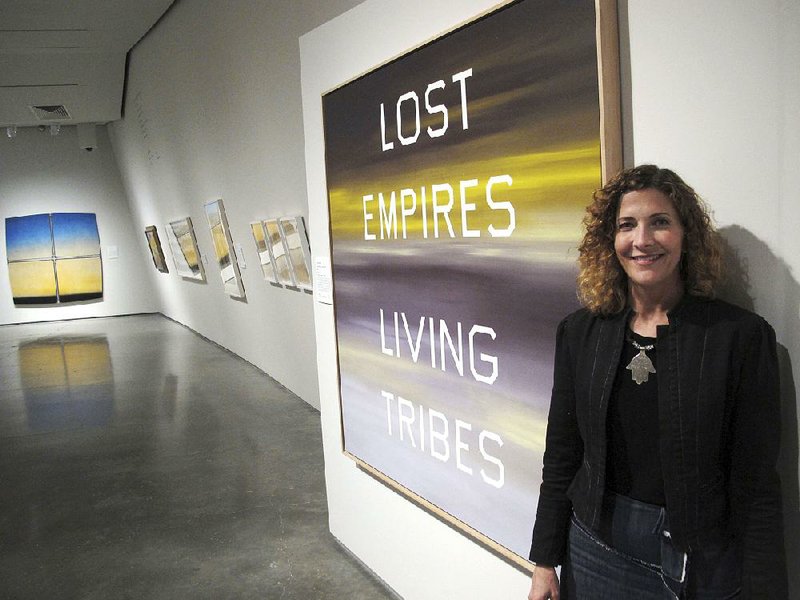RENO, Nev. -- Romantic images of cowboys and covered wagons, railroad barons and Gold Rush-era prospectors that typically depict the settling of the American West play only supporting roles at best in a Nevada art exhibit with a broader perspective on Earth's "final frontier."
"Unsettled" stars the indigenous people who were already here when the western reaches of North and South America allegedly were "tamed." It's an eclectic trip through traditional and modernistic impressions of the exploitation and enduring beauty of the sprawling "Greater West," an area extending from Alaska down the West Coast to Patagonia and Antarctica, and across the Pacific Ocean to Australia.
Ancient Mayan artifacts and paintings of wide-open spaces mix with grainy film footage of atomic bomb tests and hanging cardboard models of every U.S. Navy submarine that ever sailed the sea in the exhibit on display at the Nevada Museum of Art through Jan. 21.
"Unlike the reliably consistent Western film genre, the unsettled land of the Greater West is liable to change, unpredictable and not yet resolved," said JoAnne Northrup, the museum's curatorial director and curator of contemporary art.
The "super region" known as the Greater West was the last part of the planet permanently inhabited by homo sapiens. "It really is the final frontier," said Northrup, who worked closely with American artist Ed Ruscha to organize the exhibit in conjunction with two other museums where it will travel next, the Anchorage Museum in Alaska (April 6 to Sept. 9) and California's Palm Springs Art Museum (October to February 2019).
The 8,200-square-foot exhibit is divided into five themes: Shifting Ground, Colliding Cultures, Colonizing Resources, The Sublime Open and Experimental Diversity.
Two hundred works by the likes of Ruscha, Ansel Adams, Paul Kos, Federico Herrero, Georgia O'Keefe and 75 others reverberate one or more meanings of "unsettled," including lacking stability, worried and uneasy, and having no settlers or inhabitants.
"When we had this manifest destiny that drove us westward, the lands already were settled, just not by the colonial powers," Northrup said. "The thesis of the Greater West is the indigenous culture meeting colonial culture, the collision and what happens as a result."
Julie Decker, the Anchorage Museum's director and chief executive officer, said her organization is excited about the chance to collaborate "in a way that connects regions."
Alaska is often considered a "place of the romantic wilderness, the furthest 'West of America' -- a place discovered," she said. "But Alaska is host to a complex landscape, many languages and centuries of indigenous culture."
Ruscha's work, "Lost Empires, Living Tribes," hangs in the main gallery where visitors are greeted by Bolivian artist Sonia Falcone's "Campo de Color (Color Field)" -- 88 terracotta bowls filled with bright, multicolored pigments and a variety of ground spices, including pepper, clove, mustard, cinnamon and nutmeg.
Other works on display by Ruscha include his iconic "Chocolate Room," a room literally made of sweet-smelling chocolate shingles. It's the fifth version of his work since it debuted at the 1970 Venice Biennale in Italy.
IF YOU GO
Nevada Museum of Art, 160 W. Liberty St., Reno. "Unsettled," through Jan. 21. Info: nevadaart.org
Travel on 11/19/2017
